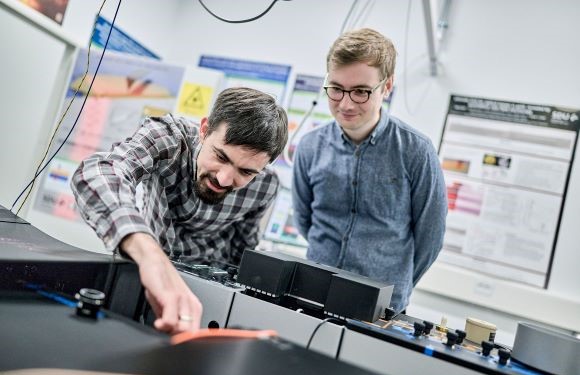When traditional materials—such as noble metals—with a well-understood optical response (in their bulk form) are explored at the atomistic level, unconventional electrodynamics due to nonlocal, surface, and quantum effects emerge. These effects cannot be captured by merely relying on Maxwell’s equations and the bulk optical properties of the material, and call for more detailed quantum descriptions. Identifying, quantifying, and understanding this complex optical response is vital for applications in communications and sensing. At the same time, achieving such a detailed description of a material is experimentally challenging because of possible sample contamination and surface roughness, while theoretical approaches rapidly become computationally impractical.
Surface-response functions promise to provide an efficient bridge between large-scale electrodynamics and atomistic descriptions. While analytic and numerical methods for their theoretical determination already exist, their successful implementation into everyday nanophotonics relies on the ability to experimentally verify the theoretical predictions and clearly distinguish between quantum effects and fabrication imperfections.
Polaritons in 2D materials, deposited on, or encapsulating a sample such as a high-quality monocrystalline noble-metal flake, act as sensitive probes for the electrodynamics dominating the sample. Plasmons in graphene, phonon polaritons in hexagonal boron nitride, and image polaritons in van der Waals heterostructures, sensitively depend on their surroundings, allowing one to explore and characterize the surface-response functions of the sample. They also open an efficient route for probing other unconventional states, such as the Shockley/Tamm surface states in metals and artificial periodic media, or the Higgs mode in superconductors.

- S. Boroviks, Z.-H. Lin, V. A. Zenin, M. Ziegler, A. Dellith, P. A. D. Gonçalves, C. Wolff, S. I. Bozhevolnyi, J.-S. Huang, and N. A. Mortensen, Extremely confined gap plasmon modes: when nonlocality matters, Nature Communications 13, 3105 (2022).
https://doi.org/10.1038/s41467-022-30737-2 - S. G. Menabde, S. Boroviks, J. Ahn, J. T. Heiden, K. Watanabe, T. Taniguchi, T. Low, D. K. Hwang, N. A. Mortensen, and M. S. Jang, Near-field probing of image phonon-polaritons in hexagonal boron nitride on gold crystals, Science Advances 8, eabn0627 (2022).
https://doi.org/10.1126/sciadv.abn0627 - S. G. Menabde, J. T. Heiden, J. D. Cox, N. A. Mortensen, and M. S. Jang, Image polaritons in van der Waals crystals, Nanophotonics 11, 2433 (2022).
https://doi.org/10.1515/nanoph-2021-0693
